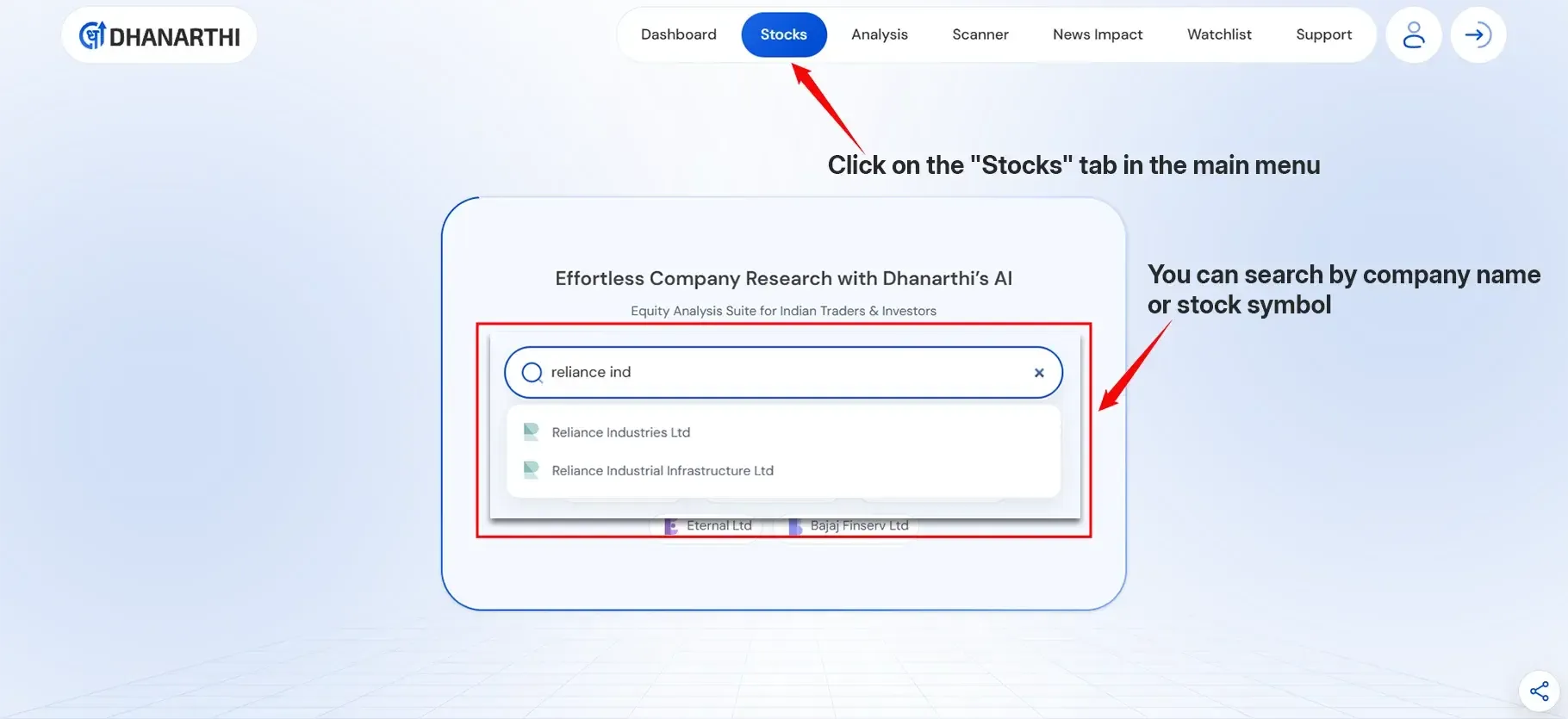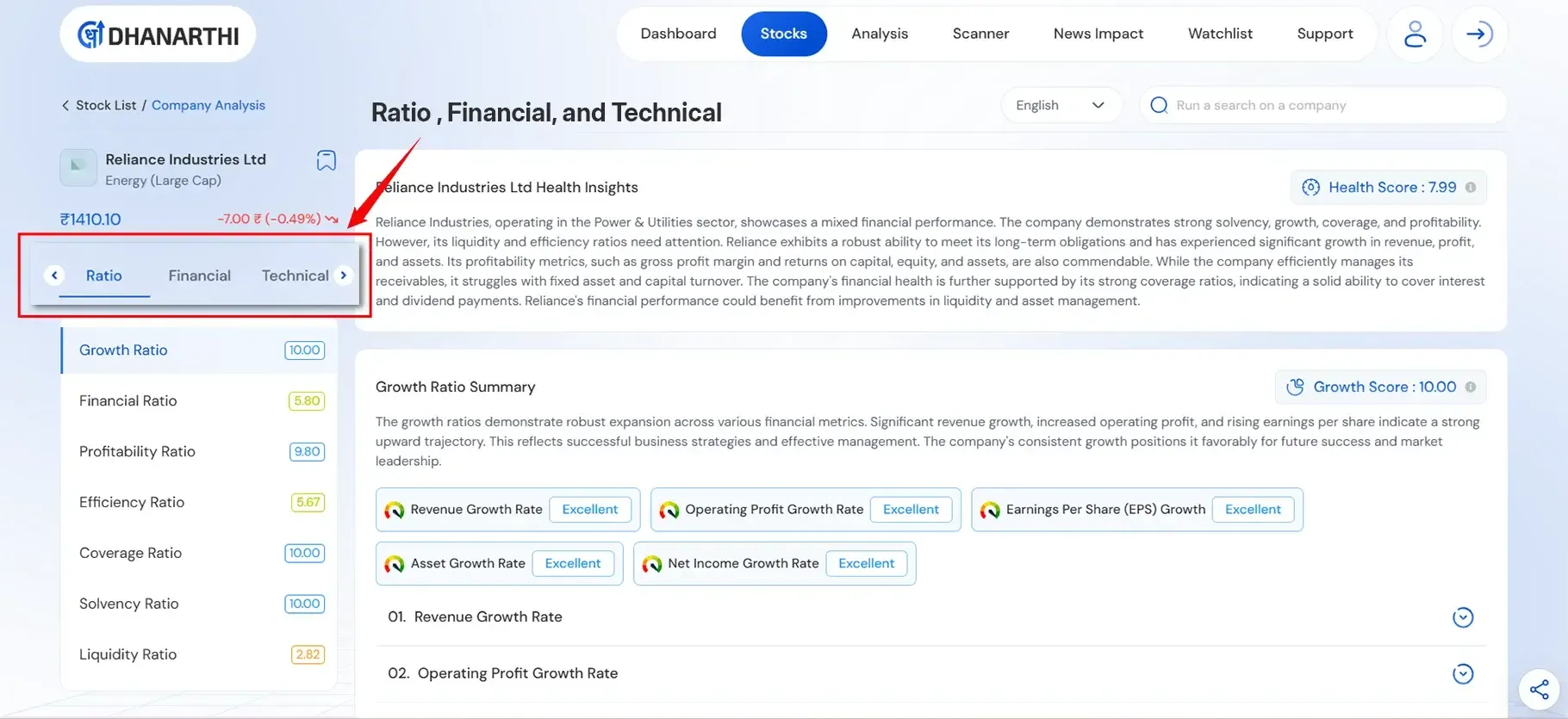Support and Resistance: Complete Trading Guide 2026
December 15, 2025


TABLE OF CONTENTS
Are you new to stock trading? Do you feel overwhelmed when people discuss how to analyze stocks? Don't stress! We will learn three simple and effective ways to analyze stocks. Doing so will help you make better decisions when trading stocks and safely grow your money.
Many new traders lose money because instead of analyzing the stocks properly, they just make guesses. Successful traders will always use these three tools before they buy or sell any stock. Let's learn how to do it step by step.
Before we start, let's understand what we will learn today:
1. Ratio Analysis - This helps us check if a company is healthy or sick
2. Financial Analysis - This shows us how much money a company makes
3. Technical Analysis - This tells us the best time to buy or sell stocks
Think of these as the toolbox of a carpenter. The carpenter will need different tools for different jobs, and so traders will need all three analysis methods for different circumstances.
Ratio analysis is similar to offering a checkup for companies' health. When you are checked by a doctor they check your blood pressure, heart rate, and lots of other things to find out if you are healthy. Similarly, we look at a different set of numbers to find out if a company is healthy or not.
The ratio analysis meaning is quite straightforward: we look at a range of figures in a company's financial statements and make comparisons of those figures to find out how the company is doing.
Imagine you want to lend money to a friend. What would you ask them first? You would want to know:
Do they have a job?
Do they earn enough money?
Do they already owe money to others?
Can they pay you back?
Ratio analysis helps us ask the same questions about companies before we invest our money in their stocks.
There are four main types of ratio analysis that every trader should know:
These help to determine whether a company has the capacity to pay its bills or commitments as they come due. The current ratio (current assets divided by current liabilities) tells someone they have cash flow, or the ability to pay bills, to cover expenses. Generally, a ratio greater than 1 shows that a business can pay its obligations.
Current Ratio = Current Assets ÷ Current Liabilities
If this number is above 1, it means the company can pay its bills. If it's below 1, the company might have trouble paying its expenses.
Example : If a company has ₹100 in current assets and ₹80 in current liabilities, the current ratio is 1.25. This is good because it's above 1.
Net profit margin indicates how much profit a company keeps after it has paid all dirtied expenses. This ratio will let you know if the management is converting revenue into actual shareholder value.
Net Profit Margin = Net Profit ÷ Total Sales × 100
(This tells us how much profit the company makes from every ₹100 of sales.)
Example : If a company has ₹10 profit from ₹100 sales, its net profit margin is 10%. This means they keep ₹10 from every ₹100 they earn.
The debt-to-equity ratio instead shows how much of the company's assets are financed through debt and which part through its own equity. Investors typically prefer lower ratios indicating lower risk.
Debt-to-Equity Ratio = Total Debt ÷ Total Equity
(Lower numbers are usually better because it means the company doesn't owe too much money.)
Here, asset turnover comes into play. If a company can generate more sales with its existing assets, that’s typically a good sign of operational efficiency.
Asset Turnover = Sales ÷ Total Assets
(Higher numbers mean the company is good at using its assets to generate sales.)
I recall my earlier days as an investor, finding out how just one red flag—like a declining current ratio or a really high debt-to-equity ratio—could have saved me from investing in the wrong stock.
The benefits of ratio analysis are many:
• Make Smart Decisions : You can make decisions based on real numbers rather than just guessing
• Compare Companies : You can quickly compare two companies in the same industry
• Spot Problems Early : You can see if a company is encountering problems before the others see it
• Reduce Risk : You can stay away from companies that could fail.
Step 1 : Get the company's financial statements (annual report)
Step 2 : Calculate 3-4 important ratios
Step 3 : Compare these ratios with other companies in the same industry
Step 4 : Look at how these ratios have changed over the last 3-5 years
Step 5 : Make your decision based on what you find
Financial statement analysis is like receiving a report card from the school. Just like your report card has the grades you received from the different classes you took, a company's financial statements show how well it is performing in different areas of business.
Every company has three main financial statements:
Income Statement - Shows how much money the company made or lost
Balance Sheet - Shows what the company owns and owes
Cash Flow Statement - Shows how cash moved in and out of the company
As you sharpen your skills, you can start recognizing trends, like steady increases in profits, out-of-control expenses, or the ability to generate cash primarily from operations instead of one-time deals. Comparing the numbers year-over-year gives one an idea of whether the company is growing steadily, or struggling.
I remember one of my first experiences was reading the a mid-size manufacturing company’s annual report. Although their sales were flat, I noticed their expenses continuing to rise, and their cash flow declining. I decided not to invest. A year later the company had a sizeable loss - proof of the value of basic financial statement analysis in the real-world.
There are simple tools of financial statement analysis that beginners can use:
This means comparing numbers from different years to see if the company is growing or shrinking.
Example : If a company's sales were ₹100 crore last year and ₹120 crore this year, it grew by 20%. This is good!
This means looking at each item as a percentage of the total.
Example : If a company spends ₹30 crore on raw materials out of ₹100 crore total sales, then raw material cost is 30% of sales.
This means looking at numbers over many years to spot patterns.
Fundamental analysis of stocks means studying everything about a company to find its true value. It's like being a detective who looks for clues to solve a mystery.
When doing fundamental analysis, we look at:
• The company's business model
• How much profit it makes
• How fast it's growing
• What problems it might face
• How it compares to competitors
Financial performance analysis answers these basic questions:
• Is the company making more money than last year?
• Are expenses under control?
• Is the company growing faster than its competitors?
• Does the company have enough cash to survive tough times?
The role of financial analyst is to study companies and give advice about investing. While you may not become a professional analyst, you can learn their basic skills:
• Reading financial statements
• Calculating important ratios
• Understanding industry trends
• Making investment recommendations
Ratio and financial statement analysis is about what to buy and technical analysis helps with when to buy or sell. Technical analysis involves the study of price trends and trading volumes. It uses charts and indicators to identify patterns in a stock's movement.
Stocks don’t move in a straight line: Trends are influential. An uptrend shows consistent upward movement while a down trend is consistent drops. There are also sideways or range-bound markets which have no defined direction.
So, what is technical analysis in layman's terms? It is looking at charts and patterns in order to use those to determine where stock prices might go in the future.
Technical analysis of the financial markets is based on three simple ideas:
1. All Information is in the Price : The stock price already includes all the news and information about the company
2. Prices Move in Trends : Stock prices usually move up or down for some time, not randomly
3. History Repeats : Similar patterns happen again and again in the stock market
Stock market technical analysis uses these basic concepts:
• 1. Support : A price level where the stock usually stops falling and starts going up
• 2. Resistance : A price level where the stock usually stops rising and starts going down
Think of support like a floor that catches a falling ball, and resistance like a ceiling that stops a ball from going higher.
• 1. Uptrend : Stock price is generally moving up over time
• 2. Downtrend : Stock price is generally moving down over time
• 3. Sideways Trend : Stock price is moving neither up nor down, just sideways
Here's how to do technical analysis of stock trends step by step:
Step 1 : Look at the stock chart for the last 6 months
Step 2 : Identify if the trend is up, down, or sideways
Step 3 : Find support and resistance levels
Step 4 : Look for chart patterns (like triangles, rectangles)
Step 5 : Check trading volume (how many shares were traded)
Step 6 : Use this information to decide when to buy or sell
Here are some easy-to-understand technical indicators:
This shows the average price of a stock over a certain number of days. If the current price is above the moving average, it's usually a good sign.
This number goes from 0 to 100. If it's above 70, the stock might be too expensive. If it's below 30, the stock might be too cheap.
This shows how many shares were traded. High volume usually means the price movement is strong and reliable.
Now that you understand the three types of analysis, let me show you how to get all these reports easily using Dhanarthi's platform. Instead of doing all calculations manually, you can get professional analysis reports in just 3 simple steps:
Step 1 : Sign Up or Login to Dhanarthi
• Go to Dhanarthi website
• Create your free account or login if you already have one
• The platform is designed for both beginners and experts

Step 2 : Search and Select Your Stock
• Click on the "Stocks" tab in the main menu
• Use the search box to find any company you want to analyze
• You can search by company name or stock symbol
• Select the company from the search results

Step 3 : Get Complete Analysis Reports Once you select a company, you will see three main sections:
• Ratio Analysis Report: Shows all important financial ratios with easy-to-understand scores
• Financial Analysis Report: Displays company's financial health, growth rates, and performance metrics
• Technical Analysis Report: Provides technical indicators, trend analysis, and market sentiment

Special Feature : Reports in Hindi The best part is that you can read all these reports in Hindi language too! This makes it easier for Indian traders to understand complex financial terms in their preferred language.
Ratio Analysis Section :
• Growth Ratio Score (10.00 - Excellent)
• Financial Ratio Score
• Profitability Ratio Score
• Liquidity Ratio Score
All ratios are color-coded and easy to understand
Financial Analysis Section :
• Revenue Growth Rate with "Excellent" rating • Operating Profit Growth Rate • Earnings Per Share (EPS) Growth • Asset Growth Rate • Net Income Growth Rate
Technical Analysis Section :
• Overall market sentiment score (Bullish/Bearish) • Trend indicators (14 different indicators) • Momentum indicators (7 indicators) • Volatility and Volume analysis
(All technical signals in simple terms)
When I analyze a new stock, my process typically looks like this:
1. Study the Financial Statements : I start by downloading the company’s latest annual report and scanning for revenue trends, profit margins, and cash flow patterns.
2. Calculate Key Ratios : Next, I manually compute liquidity, profitability, leverage, and efficiency ratios to check for any deal-breakers or outstanding strengths.
3. Compare With Competitors : Benchmarking the company’s numbers against similar businesses in the sector gives context.
4. Chart Analysis : I review the stock’s recent price chart to spot trends. If technical indicators signal strength and fundamentals look good, I continue.
5. Broader Market Considerations : If market sentiment is poor, even a strong company’s stock may underperform, so I watch key indexes too.
Often, I use platforms like Dhanarthi to streamline the process. Instead of crunching numbers in spreadsheets or hunting for the latest reports, tools like these provide a consolidated view, offering clear financial ratios, growth analysis, and technical charts all in one place. This saves valuable time without compromising on depth or reliability.
1. Save Time : Instead of spending hours calculating ratios and reading charts, get all reports in seconds
2. Professional Quality : Get the same quality analysis that professional traders use
3. Easy to Understand : All reports are designed for beginners with simple explanations
4. Hindi Language Support : Read everything in Hindi if you're more comfortable with it
5. All-in-One Platform : Get ratio analysis, financial analysis, and technical analysis in one place
6. Free Access : Start analyzing stocks without any cost
Here are mistakes that beginners often make:
• Using Only One Method : Don't rely on just ratio analysis or just technical analysis. Use both together
• Following Tips Blindly : Always do your own analysis before investing
• Ignoring Risk Management : Never invest all your money in one stock
• Being Impatient : Good analysis takes time. Don't rush your decisions
Ratio analysis, financial statement analysis, and technical analysis are the three pillars of successful trading. Like a three-legged stool that needs all three legs to stand properly, good trading needs all three analysis methods to be successful.
Start your journey today by learning these basics. Remember, you don't need to become an expert overnight. Take it step by step, practice regularly, and always keep learning.
The difference between successful traders and those who lose money is simple: successful traders analyze before they invest, while others just guess and hope for the best. Platforms like Dhanarthi provide you with all the tools and resources you need, right from ratio analysis to deep financial and technical reviews, all in one place. Just sign up and log in to get started; you'll have everything at your fingertips to build your trading expertise and take confident steps toward success.
Disclaimer : This article is for educational purposes only and should not be considered as investment advice. Always consult with a financial advisor before making investment decisions.
1. What is ratio analysis in trading?
Ratio analysis examines a company’s financial metrics to assess its health before investing.
2. Why is financial statement analysis important?
It helps you understand a company’s performance and financial stability through its reports.
3. How does technical analysis improve trading decisions?
By studying price trends and patterns, it helps to time your entry and exit in the market.
4. Can beginners perform these analyses easily?
Yes, with practice and platforms like Dhanarthi, which simplify complex data into actionable reports.
5. Which ratio is most important for beginners?
The current ratio is a good start, as it shows if a company can meet short-term obligations.
6. How often should I analyze my stocks?
Regularly—monthly or quarterly—to track trends and news affecting your investments.
7. Is Dhanarthi free to use for stock analysis?
Yes, Dhanarthi offers free access to detailed ratio, financial, and technical analysis reports.
Share Market
IPO
Artificial Intelligence
Semi Conductor